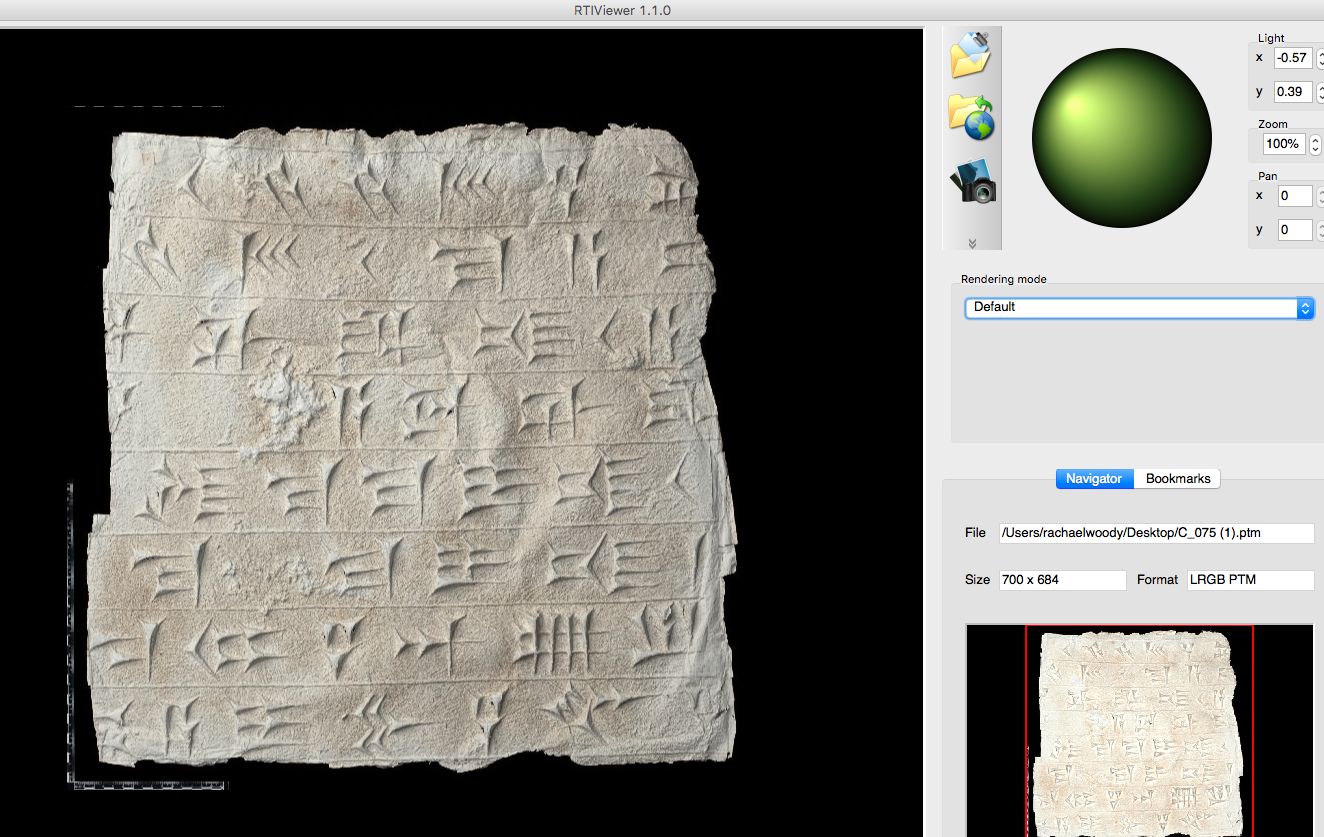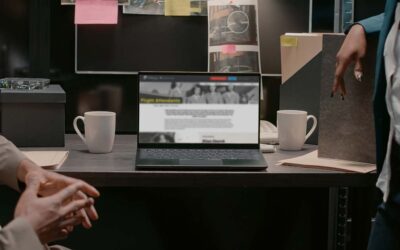RTI Digitization in the Museum

Rachael Cristine Woody
Digitization within museums takes many forms. With the increasing accessibility of 3D digitization methods, it can be difficult to determine the point at which 2-Dimensional (2D) digitization isn’t enough and 3-Dimensional (3D) digitization is needed. However, there is an alternative option for objects that are mostly 2D, but require a more powerful form of digitization.
2D digitization is regularly employed for 2D objects such as documents and photographs. Using a flatbed scanner, overhead scanner, or copy stand photography are all sufficient and reasonably priced digitization methods for digitally capturing 2D objects. In addition to these methods being mainstream and affordable, the file outputs of 2D digitization are usually .JPG or .TIF – file extensions that can be easily ingested into any museum catalog.
While 2D digitization techniques work for a majority of 2D objects, there are a selection of 2D (or mostly 2D) objects that can benefit from a different method of digitization. Though there are 3D digitization methods that can be employed to digitize 2D objects, the use of 3D digitization technology may be overkill. 3D digitization can be expensive in both time and money if the museum doesn’t already have a 3D digitization space setup nor staff trained in 3D digitization techniques. A hybrid method to employ as a solution in these scenarios is Reflective Transformation Imaging (RTI).
“What is RTI?” from the Cultural Heritage Institute: “RTI images are created from information derived from multiple digital photographs of a subject shot from a stationary camera position. In each photograph, light is projected from a different known, or knowable, direction. This process produces a series of images of the same subject with varying highlights and shadows. Lighting information from the images is mathematically synthesized to generate a mathematical model of the surface, enabling a user to re-light the RTI image interactively and examine its surface on a screen.”
The RTI method provides an interesting approach as the digital reflectance information is created from the 3D aspects of the object and the digitized image can be manipulated to provide a 3D-like effect. When the end product of an object digitized with the RTI method is viewed and its lighting source manipulated, 3D details of the original object are revealed.

The image above is a digitized squeeze from the Smithsonian Institution’s Freer|Sackler Galleries, produced via the RTI method. A squeeze is a wet pulp substance used by late-19th and early-20th century archaeologists to create molds of inscriptions or engravings on the sides of ancient structures. When removed, the molds become a 3D negative of the script or design. The molds were created for the purpose of transporting them so that archaeologists and scholars could study, translate, and reconstruct the squeeze inscriptions at a later date.
The squeezes at the Freer|Sackler Galleries are from the Ernst Herzfeld papers; and date from 1911-1934. The squeezes in this collection and in peer archaeologist collections are now more than 100 years old and were created in sub-optimum conditions. Though most of the squeezes are in fair condition; time, storage, and the squeeze’s inherently fragile nature have flattened the initial indents made to capture the inscriptions and engravings. The flat inscriptions combined with the thin paper material that compose the squeezes makes them harder to decipher. However, digitization of the squeezes using the RTI method can cast greater contrast on the 3D indentations and produce more clearly legible indentations from the squeeze.
RTI digitization renders a .PTM file. PTM stands for polynomial texture mapping (the precursor to RTI) and is a map format. If your museum is considering the use of RTI to help supplement digitization work, make sure the museum’s collections management system accepts and publishes .PTM files. Depending on the system, the museum may still need to provide or direct users to a .PTM viewer. A viewer is needed to open and manipulate an RTI image and a free viewer can be downloaded from the Cultural Heritage Institute, here.
For more information on RTI and the Smithsonian Institution’s digitization of squeezes, please visit the Museum Conservation Institute.

Rachael Cristine Woody
Stan writes regularly for Lucidea’s Think Clearly blog. Subscribe to ensure you never miss a post with engaging information for KM practitioners and special librarians! Learn about Lucidea’s Presto, SydneyDigital, and GeniePlus software with unrivaled KM capabilities that enable successful knowledge curation and sharing.
Similar Posts
An Introduction to Scrollytelling for Museums
Discover how museums use scrollytelling and digital storytelling platforms to create immersive narratives. This introduction explores key concepts and approaches to interactive storytelling.
Exploring Self-Determinate Multiple Pathways: An Example of Digital Storytelling
Discover how self-determinate multiple pathways offer flexible interactive storytelling in museum exhibits. Learn from the Tenement Museum’s ‘Your Story Our Story.’
Digital Museum Storytelling Example: A Look at Self-Determinate Linear Pathways
Self-determinate characteristics on a linear pathway go beyond brief sidebar topics and instead offer alternative ways to navigate the linear pathway.
Digital Storytelling in Museums: The Prescriptive Linear Pathway in Action
Rachael Woody emphasizes that storytelling is key to engaging audiences with collections. One effective approach? The prescriptive linear pathway—a simple yet powerful method for guiding visitors through digital exhibits.





